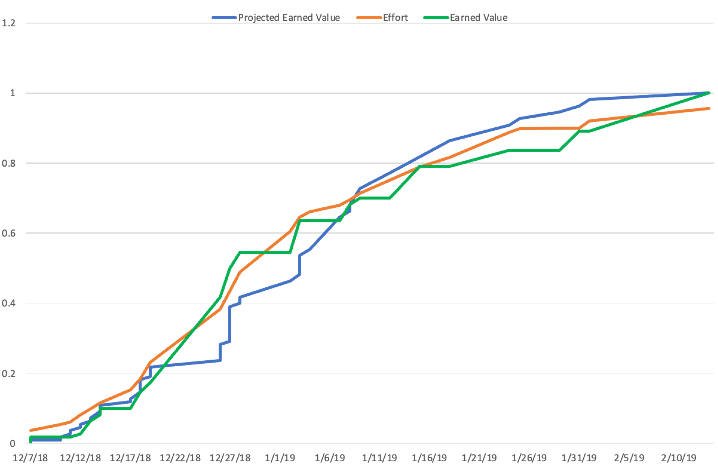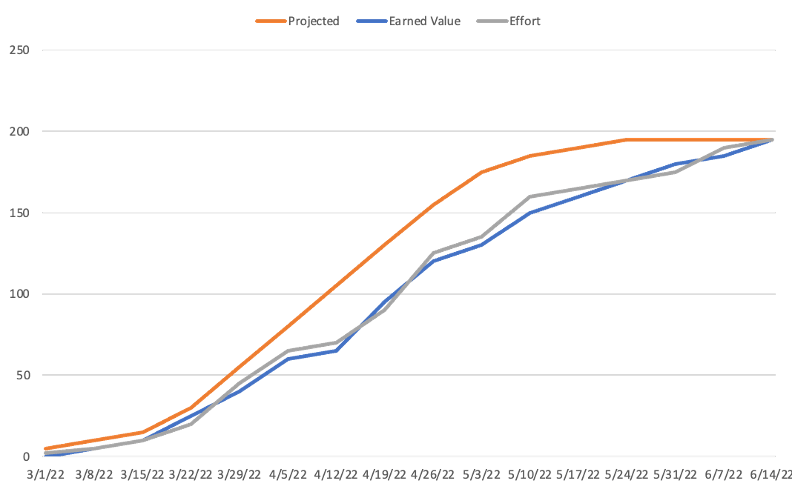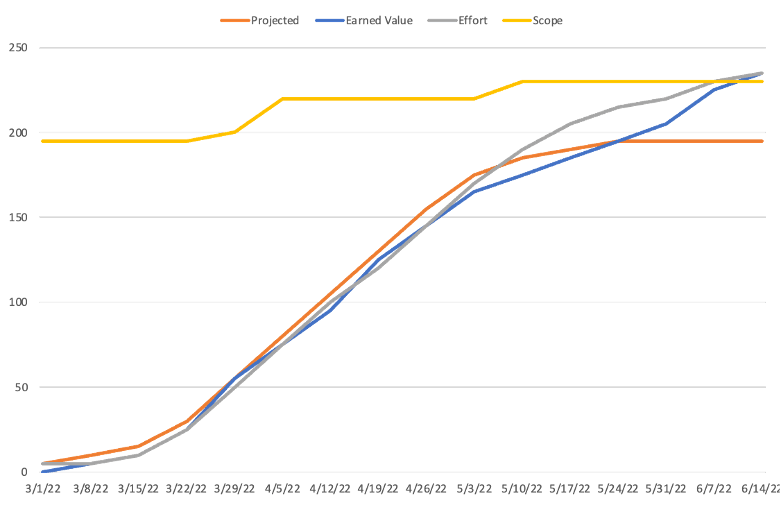
Earned Value
Tracking project progress isn’t as simple as you would think. Common questions often include, “are we there yet?”, “are we going to end over budget?”, and “are we going to end past the schedule?”
These questions keep people up at night.
And the answer, “we’ll be done when we are done,” usually doesn’t fly.
Earned value allows for reporting on project budget and schedule. The concept doesn’t come from the software industry, but it is very applicable. With earned value, you must first create a plan. That plan will show you earning value over time. This is your projected earned value.
Wait, how do you earn value?
With earned value reporting, each activity is given some value, typically in how long it is estimated to complete. For example, a one-day activity will earn one day of value.
Ideally, a project earned value should look something like this:

But sometimes projects run behind, and we will go over schedule or budget. These situations create earned value graphs like this:

Another common problem is resource leaking. This is usually when the resources are not working on the project as they are supposed to. This is common in companies where the team members are assembled from existing staff. In this situation, the existing staff often spends a lot of time working on a previous project and not the current one.

Projects will go over because more scope keeps being added to the project. You can also track this situation by adding scope as something tracked.

Earned value won’t solve your project problems, but it can give you quick insights into when your projects are having problems. It is an excellent tool to have in your toolbox.



